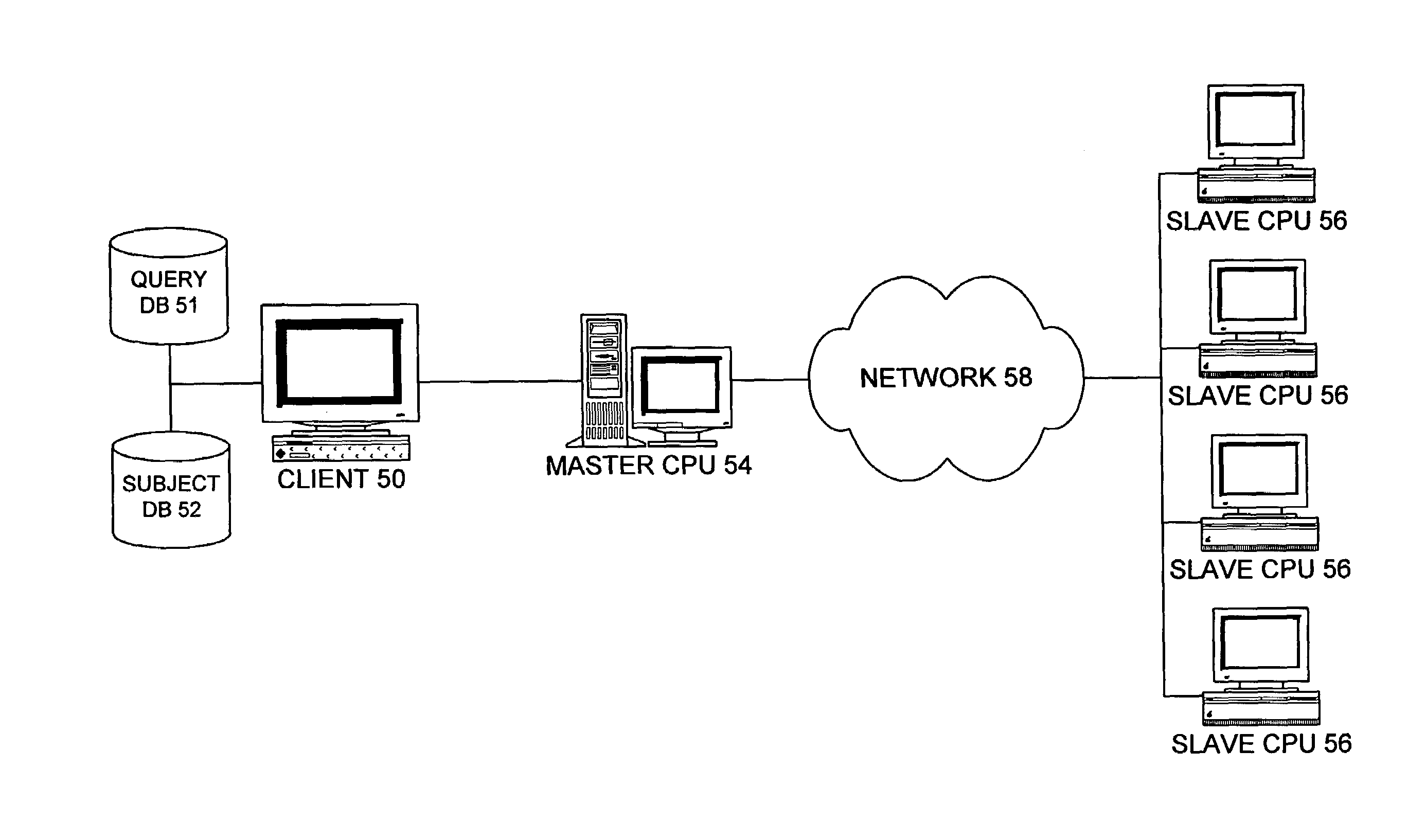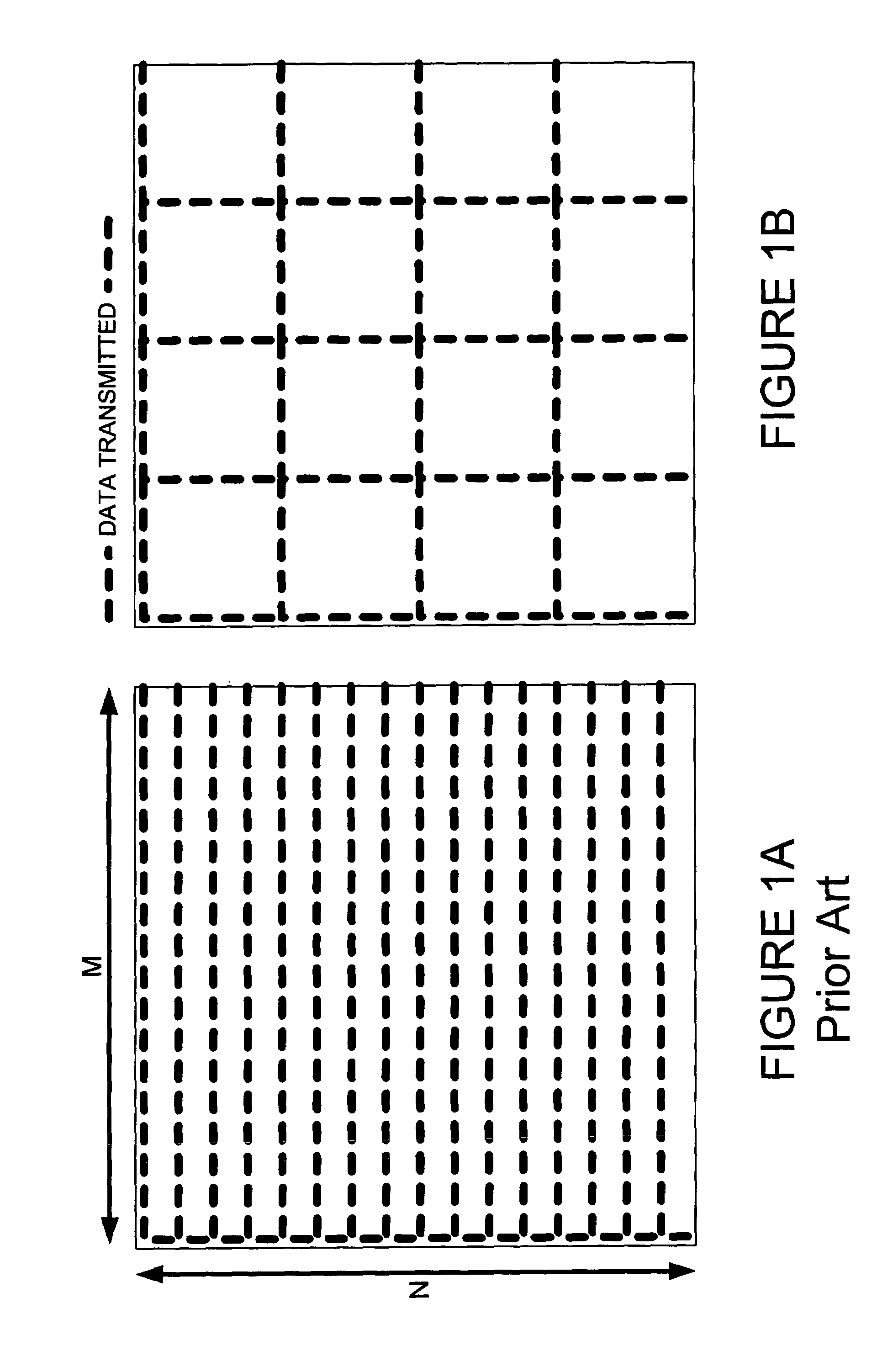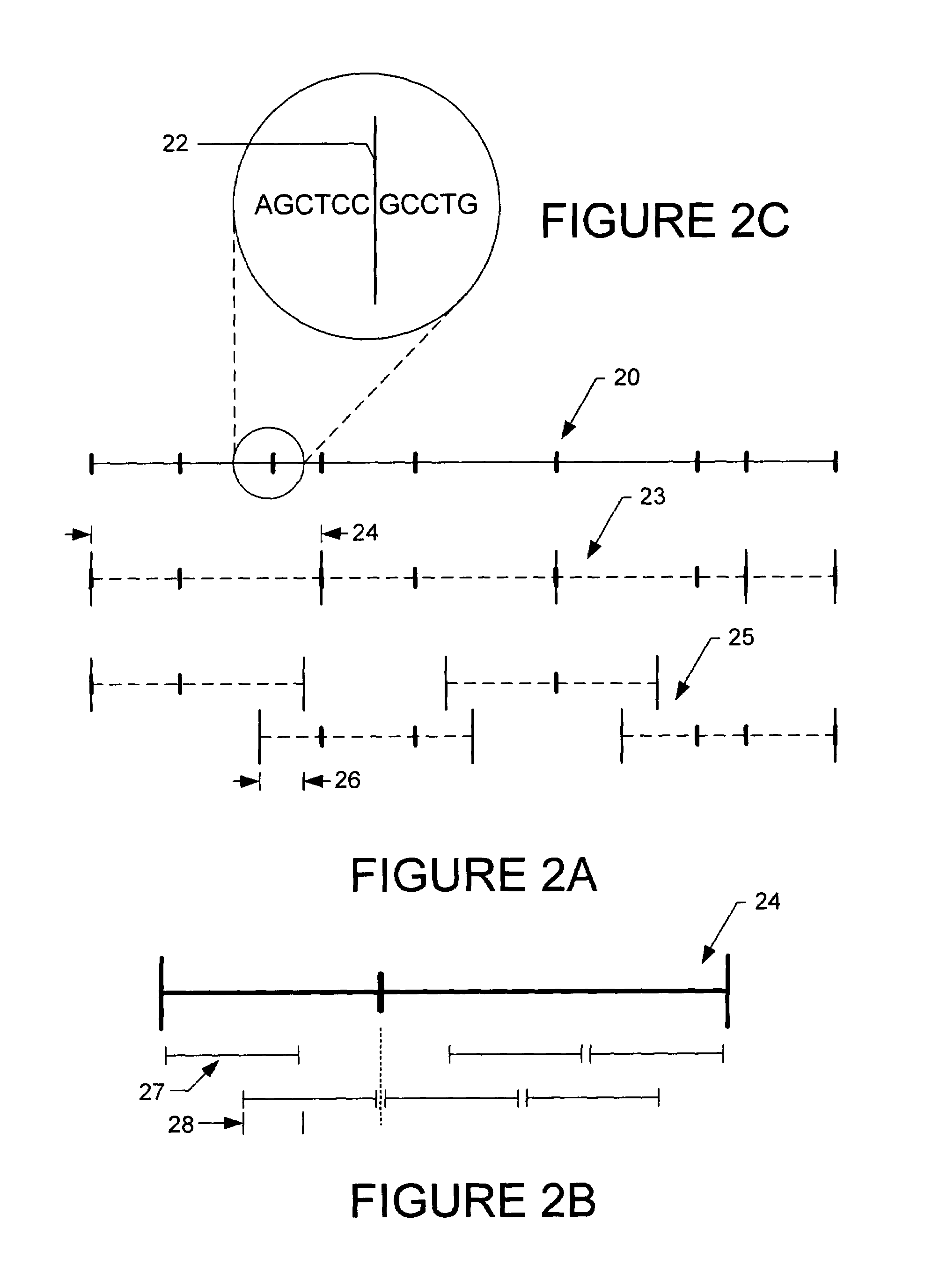Apparatus and method for providing sequence database comparison
- Summary
- Abstract
- Description
- Claims
- Application Information
AI Technical Summary
Benefits of technology
Problems solved by technology
Method used
Image
Examples
Embodiment Construction
[0062]Invention performs comparison of two databases, a query database, and subject database, searching for similar database entries according to user-defined similarity criteria. Although disclosed primarily for genomic and proteomic analysis, it is understood that the present invention is not meant to be so limited, as it is useful for comparison of any other types of suitably-sized data strings.
[0063]The apparatus, as illustrated diagrammatically in FIG. 5, comprises a client computer or system 50 with access to the query and subject databases 51, 52 in communication with a master CPU 54. The master CPU 54 is in communication, at least intermittently, with a plurality of slave CPUs 56 over suitable means, such as a network 58 that could comprise a LAN, WAN, the Internet, etc. In a preferred embodiment, client computer 50 employs Prospector™ software from Parabon™ Computation of 3930 Walnut Street, Suite 100, Fairfax, Va. 22030-4738. Likewise, the slave CPUs 56 preferably employ c...
PUM
 Login to View More
Login to View More Abstract
Description
Claims
Application Information
 Login to View More
Login to View More - R&D
- Intellectual Property
- Life Sciences
- Materials
- Tech Scout
- Unparalleled Data Quality
- Higher Quality Content
- 60% Fewer Hallucinations
Browse by: Latest US Patents, China's latest patents, Technical Efficacy Thesaurus, Application Domain, Technology Topic, Popular Technical Reports.
© 2025 PatSnap. All rights reserved.Legal|Privacy policy|Modern Slavery Act Transparency Statement|Sitemap|About US| Contact US: help@patsnap.com



